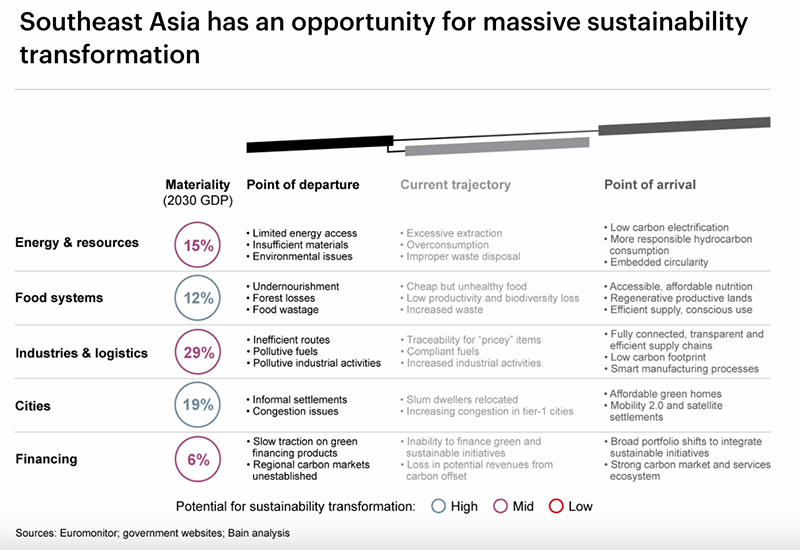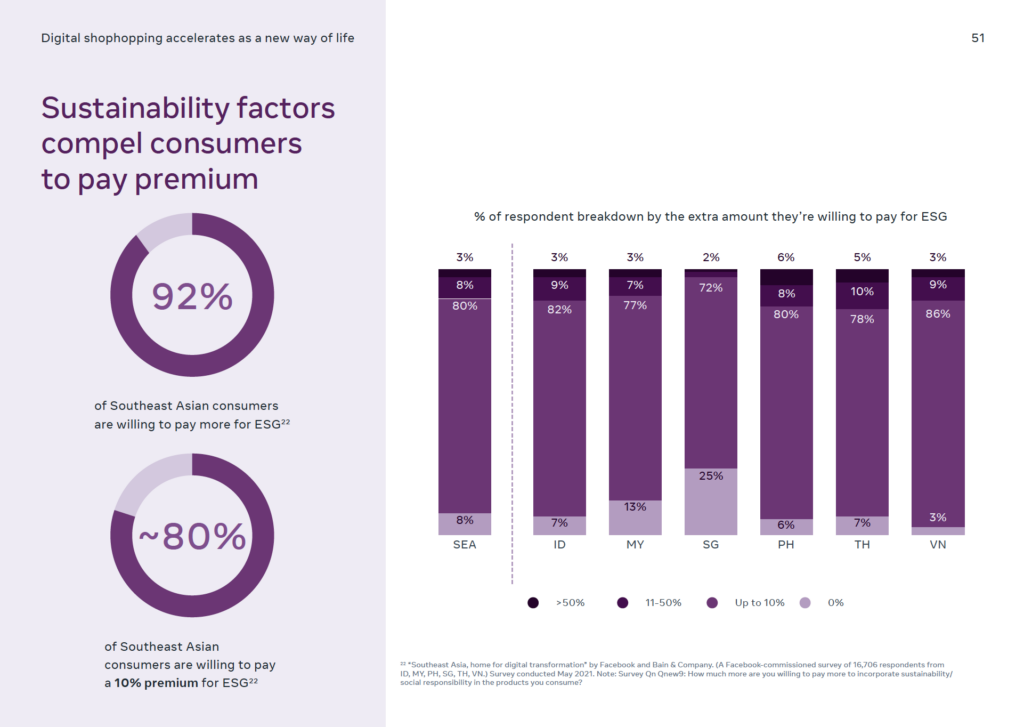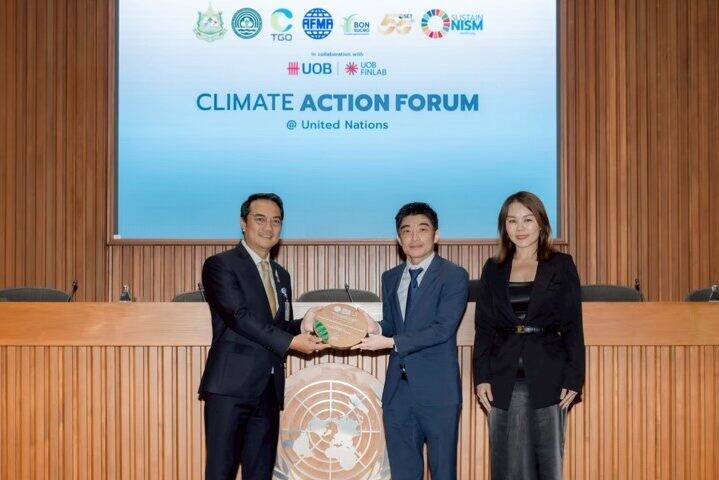
Upskilling: A Key Strategy to Futureproof SMEs in a Digital and Sustainable Economy
Upskilling is the key for SMEs to thrive in a digital and sustainable economy—and UOB FinLab is here to make it happen.

Sustainability is arguably one of the biggest buzzwords today, driven by the government’s unveiling of the Singapore Green Plan 2030 and its commitment to the United Nation’s (UN)’s 2030 Sustainable Development Goals (SDGs). Businesses such as Small and Medium Enterprises (SMEs), which are hailed as the lifeblood of ASEAN economies, are faced with challenges to find a new ground in a post-pandemic world. As they have to rethink and reinvent, it is also an opportune time now for SMEs to delve into sustainable practices and solutions to position their business for the next century.
Going green, however, can be seen as costly, as doing so entails a change in business processes and the adoption of new technology. For example, when adopting solar energy, a business will need to invest in solar panels and a solar energy system. Eco-friendly materials, such as bamboo, may be more expensive to source and to produce, compared to cheaper but environmentally harmful alternatives, such as plastic.
Nevertheless, there are worthwhile sustainable practices that SMEs can adopt. Some of these also present opportunities for business growth. Consider these five tips for SMEs to find opportunities and reap benefits through their adoption of sustainability.
By 2030, Southeast Asia could gain an economic advantage of up to US$1 trillion annually from developing its green economy, according to a Bain analysis. Some of the greatest potential gains come from urban development, energy and resources, food systems and industries and logistics.

It is an ideal time to contemplate the business opportunities for your sector and market. For instance, financial services companies are developing new product lines such as green bonds, social impact bonds, carbon credit trading and environmental risk insurance. Restaurants can consider growing urban gardens, both to support their food supply and to open up new revenue streams by selling local produce to consumers or creating new menu items based on homegrown, seasonal ingredients.
You could also capture opportunities from corporations that require their partners and suppliers to meet stringent environmental and sustainability standards. By being a first-mover in adopting these standards, you can build a pipeline of enterprise customers ahead of your competitors and support them in achieving the net-zero climate pledges that to which they have publicly committed to. These strategies were proposed by Eric Lim, Chief Sustainability Officer at UOB and Ivan Cheng, Senior Vice President, Group Wholesale Banking / Sector Solutions Group, ESG Solutions at UOB during the launch of The FinLab’s Sustainability Innovation Programme.
There are also opportunities to tap a new market segment by making sustainability core to your brand. Consumers are becoming more eco-conscious and companies need to respond to this shift in demand by providing eco-friendly products. While the cost of production may be higher, this is mitigated by the willingness of consumers to You can target the consumers across ASEAN who are willing to pay a premium for sustainable products.
A report by Bain & Company and Facebook, published in August 2021, found that 92% of Southeast Asian consumers would pay more for products that uphold Environmental, Social and Governance (ESG) factors. Around 80% are willing to pay a 10% premium for such products.

In Singapore, 32% of consumers make purchasing decisions based on a product’s environmental impact, and 35% are willing to pay more for sustainable alternatives, according to a joint study by the World Wide Fund for Nature and Accenture. Consumers in Thailand echo this sentiment— 80% say they made more eco-conscious purchases during the pandemic.
Adopting a sustainability-driven agenda entails capital expenditure for new systems and technology; nonetheless, it can help you reduce operating expenses in the long run due to improved resource efficiency in your business operations and supply chain.
SMEs that operate on leaner budgets cannot afford to wait for a long payback period can opt for sustainability-focused financing schemes, government and private-sector grants, and other programmes that help offset the initial costs of going green.
In Singapore, the Enterprise Sustainability Programme aims to help local enterprises pursue new opportunities in the green economy, while the country’s National Environment Agency (NEA) provides various grants and awards for projects that solve local environmental problems. UOB’s u-Energy platform provides businesses with flexible financing options to reduce upfront costs.
You may also tap on grants that cover specific initiatives, such as setting up a recycling system, making buildings more energy-efficient and building an electric vehicle fleet. One example is NEA’s 3R Fund, which encourages waste reduction.
This is also a prime opportunity to check if your bank offers green loans. UOB, for instance, has in place sustainable financing frameworks for businesses.
There are also programmes that enable businesses to lease instead of purchase equipment. Sunseap has a leasing scheme in which they finance the acquaintance, installation, and maintenance of solar energy systems, while the client only needs to pay for the energy that their building consumes. Such subscription-based, energy-as-a-service schemes allow enable you to get started on the green path without a large capital investment.
Lastly, you can leverage programmes like The FinLab’s Sustainability Innovation Programme to gain deep insights on sustainability topics, to assess your “green position” and to identify relevant tech solutions.
Going green may open up new markets if you create a product that does not yet exist in those countries. Personal care and cosmetic products are prime examples of this. Nuud, an all-natural, vegan deodorant alternative that is packaged in a bioplastic sugarcane tube, is shipped to consumers and retailers globally. More than 1 million tubes of the European product have been sold globally.
Another internationalisation opportunity is in identifying markets with trade preferences for eco-friendly goods. The Asia-Pacific Economic Cooperation has reduced tariffs on 54 environmental goods, while the World Trade Organizsations is facilitating negotiations for an Environmental Goods Agreement that would eliminate tariffs on certain products that help protect the environment and climate.
Some digital sustainability practices includes (1) Implementing a utilities management system that provides you with data on your energy consumption and insights that help you identify ways to reduce energy usage (2) Eliminating paper usage using digital tools to eliminate paper usage, such as cloud-based software that enables the virtual sharing of documents, spreadsheets, and other files (3) Holding meetings online to reduce commutes
You can also adopt offline sustainability practices such as (1) Implementing a utilities management system that provides you with data on your energy consumption and insights that help you identify ways to reduce energy usage (2) Eliminating paper usage using digital tools to eliminate paper usage, such as cloud-based software that enables the virtual sharing of documents, spreadsheets, and other files (3) Holding meetings online to reduce commutes
Invest time in identifying concrete goals for your sustainability programme, as well as suitable metrics for tracking your progress. Doing so will help you identify the results you are aiming to achieve, as well as the specific actions and activities that will lead to such results.
It can be confusing to navigate the various sustainability reporting standards being proposed, but you can start with the Global Reporting Initiative. It is also best practice to tie in your efforts with suitable Sustainable Development Goals (SDGs).
When choosing goals and metrics, make sure they are based on real-world ecological and social thresholds—a practice known as a context-based approach.
Your efforts might seem like a drop in a bucket but remember that you are not acting alone—collective action can have a real impact.
Beyond the government, you can find support from your industry partners and businesses in your community.


Upskilling is the key for SMEs to thrive in a digital and sustainable economy—and UOB FinLab is here to make it happen.

UOB FinLab in Thailand has been conferred the prestigous Climate Action Award 2025 for its efforts in combating climate change

Learn about the key sustainability trends UOB FinLab is focusing on for 2025.

Designed for business owners to enhance their digital capabilities through practical learning, this programme takes businesses to the next level.
Designed for business owners to enhance their digital capabilities through practical learning, this programme takes businesses to the next level.


Bridge ideas and innovation, subscribe to the FinLab Connect now!